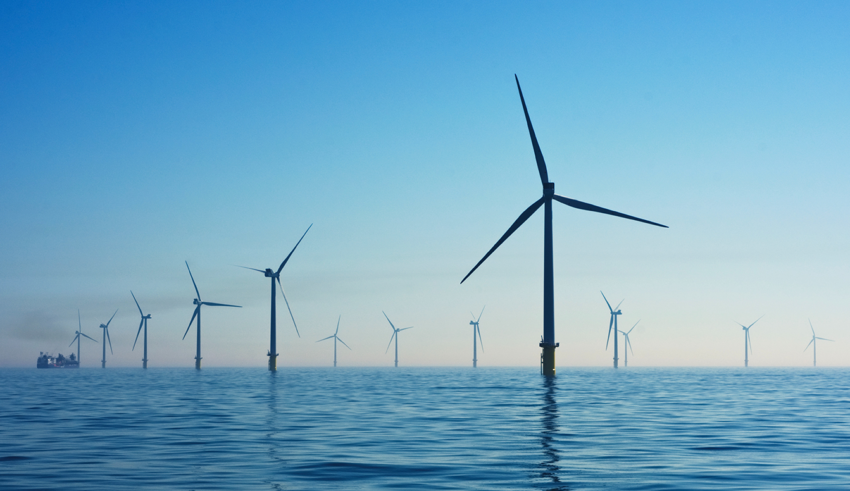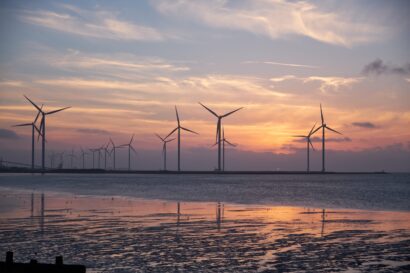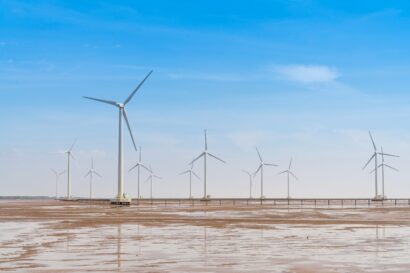AG INSIGHT | 30/08/2018
Ambitious environmental regulations can give the EU the competitive and low carbon economy it needs

Well-designed and ambitious environmental regulations will allow the EU to decarbonise its economy and boost the competitiveness of its businesses, and should play a key role in the next Commission’s priorities, argues Nick Molho, Executive Director at the Aldersgate Group.
As the EU approaches important parliamentary elections and the appointment of a new team at the helm of the Commission, the climate and environmental policy agenda is at a critical juncture. With the impacts of climate change evident across Europe this summer, greater public awareness on environmental issues such as plastics, and growing business opportunities as the global economy decarbonises, the new Commission and European Parliament will need to take stock of the EU’s climate policy and ensure it is up to the job of tackling the risks and seizing the opportunities that lie ahead.
Big risks, big opportunities
Tackling climate change isn’t just about protecting the EU from the physical and social impacts of extreme weather events – it is also about protecting the EU economy. According to a 2015 study from the Economist Intelligence Unit, climate change is expected to wipe $4.2tn off the value of the world’s current stock of manageable assets by 2100 (on average), a value equivalent to Japan’s GDP. Losses would be higher in scenarios with more extreme levels of warming
But rapidly cutting emissions and growing the EU’s low carbon economy is also about economic opportunity. In an increasingly low carbon global marketplace, the EU’s trade partners will expect products and services that deliver within international climate and sustainability commitments. The International Finance Corporation estimates for instance that the Paris Agreement on climate change will help open up to $23tn worth of opportunities for climate-smart investments in emerging markets between 2016 and 2030.
A change of perspective needed on environmental regulations
With greenhouse gas emissions down 23% below 1990 levels in 2016 and the share of renewable energy in final energy consumption rising from 9% in 2005 to 16.7% in 2015, the EU has made some important progress, recently reinforced by the adoption of its 2030 Climate and Energy Package. However, to be in line with international environmental commitments and maximise economic opportunities from the low carbon transition, the EU will need to increase its commitments. As the Aldersgate Group argues in an upcoming paper for the IEEP’s Think 2030 conference, this in turn will require EU policy makers to take a positive and proactive attitude towards environmental regulations.
Environmental regulations have often been seen by policy makers across Europe as “red tape” that stands in the way of innovation and competitiveness. Yet, there is an increasing body of evidence showing that where well-designed and properly enforced, environmental regulations can deliver economic as well as environmental benefits. In a recent report commissioned by the Aldersgate Group, global engineering consultancy BuroHappold studied the economic impacts that ambitious environmental regulations (the London Plan, the UK’s Landfill Tax and the EU Passenger Car Emission Regulations) have had in the recent past on the construction, waste and automotive sectors. In all three cases, it concluded that the initial compliance costs incurred were outweighed by economic benefits in the form of increased investment in skills, innovation, better quality products, infrastructure and supply chains, all of which have a positive impact on job creation and business competitiveness.
The implications for EU policy makers after the 2019 elections are twofold: firstly, they must put in place bold policies and regulations that will generate a stable, long-term pipeline of low-carbon investment opportunities, particularly on infrastructure, and secondly, they need to make these investment opportunities far more attractive to the world of private finance.
Creating pipelines of green infrastructure projects
Providing stable and long-term market signals to stimulate the demand for resource efficient and low carbon projects will help stimulate affordable private sector investment in innovation and a pipeline of projects, which is essential to delivering on the EU’s Paris Agreement and SDG commitments in an affordable and timely way and maximise jobs and supply chain benefits to the EU in so doing. Achieving this requires a range of regulatory tools including clear long-term targets backed by credible market mechanisms (both at the EU and Member State level), and other demand-side policies such as product standards, fiscal incentives and a green public procurement policy.
For example, the offshore wind industry in the UK has benefitted from a system of Contract for Difference auctions, which provides revenue stability up to 15 years ahead, with strike prices declining at every auction. Despite periods of policy uncertainty, the auctions have on the whole supported a fairly reliable pipeline of orders for the UK supply chain and have helped increased competition, with the result that the strike price of offshore wind in the UK has nearly halved in just two years. UK industry has in parallel increased its strengths in the export of cables, blades, foundations and towers for offshore wind, and benefitted from strong expertise in operation and maintenance.
Making green infrastructure more attractive for investment
Creating a pipeline of projects is only part of the challenge. Projects then need to be funded by a large volume of affordable private finance. The investment gap to meet the current 2030 Climate & Energy Package, which commits the EU to cutting its emissions by at least 40% by 2030, is estimated at almost €180bn annually.
Tackling this green infrastructure finance gap will require the EU to address the short-termism of financial markets, improve information available to investors and reduce private investment risk. In particular, the next Commission will need to build on its recent Action Plan on Sustainable Finance by continuing work to incorporate environmental issues in investors’ fiduciary duties, developing a practical set of definitions (or “taxonomy”) to help investors identify genuine green investment opportunities and help de-risk investment in complex projects. This could for example include providing guarantees against financial loss and technical support through InvestEU, as has previously been done with the Commission’s Natural Capital Financing Facility.
Looking beyond 2019
Delivering its international commitments and building a resilient, resource efficient and low carbon economy is by no means a simple task. But by pushing an ambitious and well-designed regulatory agenda, the next Commission can help the EU maximise the economic benefits of this transition whilst ensuring its economy is highly competitive beyond 2030.
This piece is part of the Aldersgate Group’s blog series around Think 2030, IEEP’s new sustainability platform informing a science-based agenda for European environmental policy beyond 2020. The conference convenes a diverse range of stakeholders to discuss and propose solutions to Europe’s most pressing sustainability issues and will review findings from a range of expert policy papers, one of which was written by the Aldersgate Group.



